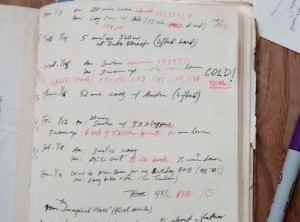Running tip #97
I would be remiss if I didn’t explain my philosophy of quality over quantity for a lifetime of injury-free running. Ever since the 1970’s running boom, coaches the world over have trumpeted the benefits of what Arthur Lydiard referred to as LSD (Long Slow Distance). Runners were encouraged to “up their mileage” if they wanted to improve, with serious bragging rights for those who ran 70 miles per week in high school, 100 miles per week in college, and as high as 140 miles per week as pros. Running lots an lots of miles – even if it was junk miles – proved you were dedicated; greatness could only be achieved through “the trial of miles and miles of trials,” as Jon L. Parker says in Once a Runner.
But not every BODY can withstand this kind of overuse abuse. Knees and hips and adrenal-glands can only take so much repetitive motion and pounding. Sooner or later, you WILL get injured if you choose quantity over quality training. I devised a method of measuring and recording my quality mileage (what I called Red Miles because I wrote the workouts in my journal with a red pen) in addition to my total mileage (written with a blue or black pen) and I discovered that the most important variable for racing success was the red mile figure.
You can see in the graphs above, that my red miles hovered around 10 miles per week and my black miles around 70, when I was racing well in the 1980’s. In the 90’s I lowered my total mileage to 45-50 mpw by replacing morning runs with swimming and ran just as fast (actually much faster) than I had with the higher mileage. I never experimented with the 100 and 100+ miles per week (b/c I simply couldn’t afford to get injured) so I don’t have any hard data to support my claims that quality trumps quantity… but I do believe my successful experiments with lower mileage kept me improving and injury-free my entire career. Here’s a sample week of how I would record my workouts with red and black pens.




